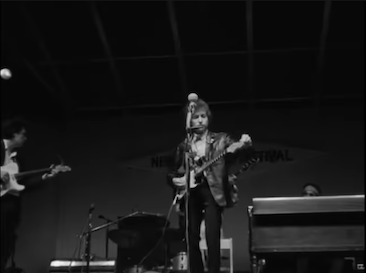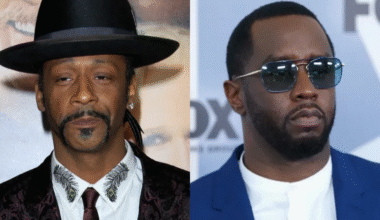July 25, 1965. The Newport Folk Festival. A warm summer night in Rhode Island, a crowd of thousands gathered to celebrate acoustic purity and political solidarity. And then came Bob Dylan—armed with a Fender Stratocaster and a very different idea of what folk music could be.
What happened next has become one of the most debated and mythologized moments in 20th-century music history. Did Dylan really get booed? Was it because he “went electric,” or simply because the sound was bad? Did Pete Seeger threaten to cut the power with an axe, or is that just a folk tale of its own?
To understand the night Dylan went electric, we have to look beyond the legend and into the complicated mix of sound, politics, and personal transformation that collided on that stage.
The Context: A Movement at Its Peak
By mid-1965, Bob Dylan was already a cultural icon. At just 24 years old, he had written anthems like Blowin’ in the Wind and The Times They Are A-Changin’, becoming the poetic voice of the civil rights and anti-war movements. He was the golden child of folk, praised for his sharp lyrics, acoustic integrity, and social consciousness.
But Dylan was restless. He was growing disillusioned with protest songs and the folk scene’s dogmatic purity. He wanted to explore surrealism, inner experience, irony, electricity. That artistic restlessness culminated in Bringing It All Back Home (1965), which featured both acoustic and electric tracks, and Highway 61 Revisited, which leaned fully into electric rock and blues.
Still, many of his fans hadn’t caught up. And Newport, the heartland of American folk orthodoxy, was the last place anyone expected Dylan to defy tradition.
The Performance: Short, Loud, and Shocking
Dylan took the stage that night with a full electric band—featuring guitarist Mike Bloomfield from the Paul Butterfield Blues Band. Wearing a leather jacket and wielding a Stratocaster, Dylan looked more like a renegade rocker than a Greenwich Village balladeer.
They launched into “Maggie’s Farm,” loud and defiant. Then came “Like a Rolling Stone,” its now-iconic snare shot cracking like a gun into the night. The third song, “Phantom Engineer” (an early version of “It Takes a Lot to Laugh, It Takes a Train to Cry”), was cut short due to timing or confusion.
Then, just like that, Dylan left the stage.
The Crowd: Booing or Begging for More?
Eyewitness accounts of the crowd’s reaction vary wildly. Some recall boos. Others remember cheers mixed with stunned silence. Pete Seeger, a key figure in the festival, reportedly hated the distorted sound, not the electric music itself. “I wanted to cut the cables,” he later clarified, “but because the sound was so bad—not because it was electric.”
The reality? The boos likely came from multiple sources: poor sound quality, short set length, frustration over Dylan’s lack of engagement, and yes, shock over the electric betrayal of folk values. But not everyone was angry—many younger fans were electrified in more ways than one.
The Fallout: Betrayal or Breakthrough?
In the weeks that followed, Dylan was criticized for “selling out,” “abandoning the movement,” and “turning his back on the folk community.” But Dylan never apologized. “I didn’t come to Newport to be embraced,” he said later. “I came to play.”
Two days after Newport, Dylan returned to New York and recorded “Positively 4th Street,” a biting takedown of hypocrisy in the folk world. Lines like “You’ve got a lot of nerve to say you are my friend” were widely interpreted as responses to the backlash.

But something else was happening too. Dylan’s electric turn sparked a revolution. Within a year, folk-rock exploded. The Byrds had a hit with their jangly version of “Mr. Tambourine Man.” Artists like Joni Mitchell, Neil Young, and Leonard Cohen would follow Dylan’s lead, exploring more complex, electrified, and personal expressions.
The Myth: Axe or Metaphor?
And what about Pete Seeger’s infamous axe? Most historians now agree that the story was exaggerated. Seeger did express frustration—perhaps even demanded the volume be turned down—but the image of him literally swinging an axe backstage has become more symbol than fact. Still, it captures the larger truth: Dylan was, in that moment, chopping away at the sacred tree of folk purity.
The Artist: Reborn Through Risk
What Dylan did that night wasn’t just plug in a guitar. He plugged into a new way of thinking—about art, about authenticity, about freedom. He rejected the role others had cast him in: the protest singer, the generational spokesperson, the acoustic purist. He chose discomfort, risk, and growth.
In doing so, he paid a price. He alienated many early fans, received scathing criticism, and wandered through a creative fog for years. But ultimately, that night opened the door to the fearless, genre-defying Dylan who would deliver Blonde on Blonde, Blood on the Tracks, Time Out of Mind, and beyond.
The Legacy: An Echo That Never Faded
More than half a century later, the night Dylan went electric remains a flashpoint—a symbol of artistic defiance, generational change, and the eternal tension between tradition and transformation. Whether you believe it was a betrayal or a breakthrough, there’s no denying it marked the beginning of a new chapter in modern music.
It wasn’t just about volume. It was about vision. And Dylan had one that no one else could hear—yet





